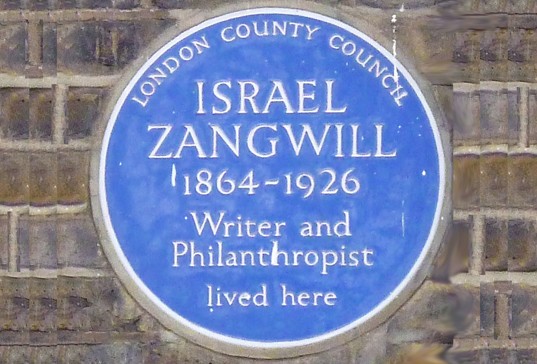
The story begins in Bow, the working class district in the East End of London. It’s December, and the nineteenth century is on its last legs. A dense morning fog, aided and abetted by the smoke of a million coal fires, swirls around the mean streets. At 11 Grover Street, however, the landlady is unconcerned. “Mrs Drabdump was one of the few persons in London whom fog did not depress. She went about her work quite as cheerlessly as usual,” wrote Zangwill.
The coroner’s sensational verdict
“It seems clear that the deceased did not commit suicide. It seems equally clear that the deceased was not murdered,” explains the coroner. Then, we are then treated to an immensely entertaining drama with a cast that includes a scolding wife, an alcoholic poet, a bumbling policemen and – in a masterstroke cameo appearance – even William Ewart Gladstone. The Dickensian names like policeman Edward Wimp add a sparkle to the dialogue, and The Big Bow Mystery is shot through with black humour, rather similar to George and Weedon Grossmith’s Diary Of A Nobody.
Admiration and influence
Arthur Conan Doyle and Wilkie Collins both dabbled with crimes that simply couldn’t have happened, but I believe that Zangwill took the locked room device to a new level. He died in 1926, but in the decades following his death, the mystery premise which he perfected became a staple in the genre. Pennsylvania born John Dickson Carr remains the most prolific 20th century author to use it, but other greats such as Agatha Christie and Ellery Queen also indulged, and we mustn’t forget that French writers such as Martin Meroy and Boileau-Narcejac were skilled and successful practitioners. It’s been 110 years since The Big Bow Mystery first baffled, infuriated and entertained readers, but even a novel published in the last few weeks – In the Morning I’ll be Gone by Adrian McKinty – pays homage to this most enduring of crime fiction set-pieces.
Why should today’s readers open and enjoy Big Bow Mystery? Firstly, because it is a beautifully crafted novel by a master wordsmith. It is not a long read by modern standards, but one in which every page, conversation and observation counts. Secondly, it is wickedly funny. Zangwill may not have been the first to use the humour of cruelty, nor will he be the last. However, in the trial scene – which takes up most of the second half of the book – he takes aim at almost every social convention and literary stereotype available to him, and his arrows find the target every time. Thirdly, and most importantly, he fools us. Well, he certainly fooled me. The clues are there, and I will not spoil your fun by telling you what they are, but suffice to say the book ends in explosive fashion.
Zangwill was the child of a Latvian father and a Polish mother. He was expensively educated in the best British schools, and became widely admired abroad, particularly in America. He was also that rarest of beasts – a social campaigner with a wicked sense of humour. It seems likely he drew on Poe’s The Murders in the Rue Morgue as that story is referenced as the book develops. However, Poe’s solution was outrageous while Zangwill’s is more subtle, and he must be credited with writing the first full length locked room mystery which lays out all the evidence for you. Whether you take note is another matter, but you do have access to the same facts as the characters in the book who are trying to solve the crime. The writer’s art lies in misdirecting the reader. It is the literary equivalent of a conjuror drawing the audience’s attention to his left hand, while the key business is being carried out by his right.
You can download The Big Bow Mystery and read it for free from The Gutenburg Project.